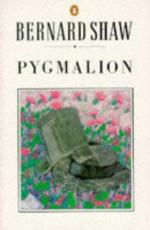|
This section contains 1,602 words (approx. 6 pages at 300 words per page) |

|
Pygmalion Myth: Texts, Culture, and Value
Summary: Provides a comparitive study of the Pygmalion myth with George Bernard Shaw's "Pygmalion" and Garry Marshall's "Pretty Woman."
Texts reflect the context of the time in which they are composed through media, language and form. This is evident in Pygmalion, a play by George Bernard Shaw and Pretty Woman, a film directed by Garry Marshall. In these two appropriations, the same Pygmalion myth is approached from two different viewpoints to reflect distinctly the context of the time in which each was written. In the play, Bernard Shaw uses a wide range of dramatic techniques to appropriate the myth, which allows him to successfully reflect his society, its values and the context of England in 1912. Similarly, Garry Marshall employs different filmic techniques to appropriate Shaw's play into Pretty Woman, a romantic comedy set in the late 20th century America, thereby encompassing its own social and cultural context, as well as a different set of values.
Shaw, being a socialist, found many faults with his society. A firm...
|
This section contains 1,602 words (approx. 6 pages at 300 words per page) |

|


